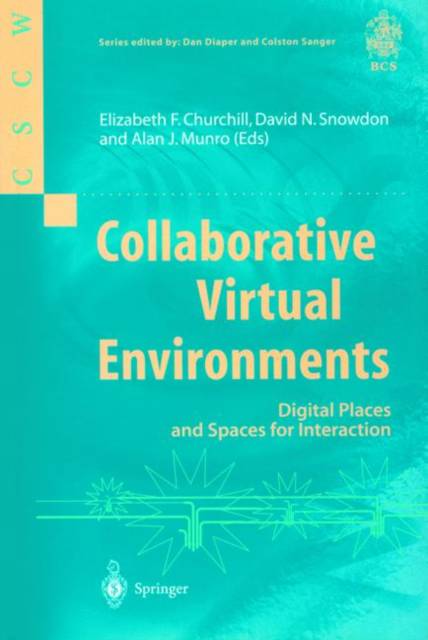
Je cadeautjes zeker op tijd in huis hebben voor de feestdagen? Kom langs in onze winkels en vind het perfecte geschenk!
- Afhalen na 1 uur in een winkel met voorraad
- Gratis thuislevering in België vanaf € 30
- Ruim aanbod met 7 miljoen producten
Je cadeautjes zeker op tijd in huis hebben voor de feestdagen? Kom langs in onze winkels en vind het perfecte geschenk!
- Afhalen na 1 uur in een winkel met voorraad
- Gratis thuislevering in België vanaf € 30
- Ruim aanbod met 7 miljoen producten
Zoeken
Collaborative Virtual Environments
Digital Places and Spaces for Interaction
€ 134,95
+ 269 punten
Omschrijving
Collaborative Virtual Environments (CVEs) are online digital places and spaces where we can be in touch, play together and work together, even when we are, geographically speaking, worlds apart. We can hang out, present alternative selves, interact with realistic and fantastic objects and carry out impossible manoeuvres. In CVEs we can share the experience of worlds beyond the physical. This book offers an introduction to up-to-date research in the area of CVE design and development. A reader might feel that, collectively, the chapters in this book beg the questions "What is a CVE?". And, for that matter, "What isn't a CVE?". These are good questions, which invoke many different responses. What is certain is that CVEs are the perfect arena for gaining insights into human-human communication and collaboration, collaborative interaction with (virtual and real) objects, the effect of (potentially differing) embodiments, and the nature of place and space. Central to our work and to the work of the authors in this volume is the belief that putting people "into the loop" - explicitly considering human-human and human-environment interaction in the design and development process - is central to the design of any technology, and especially to the design of CVEs. In the case of CVEs this means actually putting people into the worlds, and many of our authors talk explicitly about their experiences and the experiences of study partici- pants in virtual environments.
Specificaties
Betrokkenen
- Uitgeverij:
Inhoud
- Aantal bladzijden:
- 316
- Taal:
- Engels
- Reeks:
Eigenschappen
- Productcode (EAN):
- 9781852332440
- Verschijningsdatum:
- 19/03/2001
- Uitvoering:
- Paperback
- Formaat:
- Trade paperback (VS)
- Afmetingen:
- 156 mm x 233 mm
- Gewicht:
- 494 g

Alleen bij Standaard Boekhandel
+ 269 punten op je klantenkaart van Standaard Boekhandel
Beoordelingen
We publiceren alleen reviews die voldoen aan de voorwaarden voor reviews. Bekijk onze voorwaarden voor reviews.








